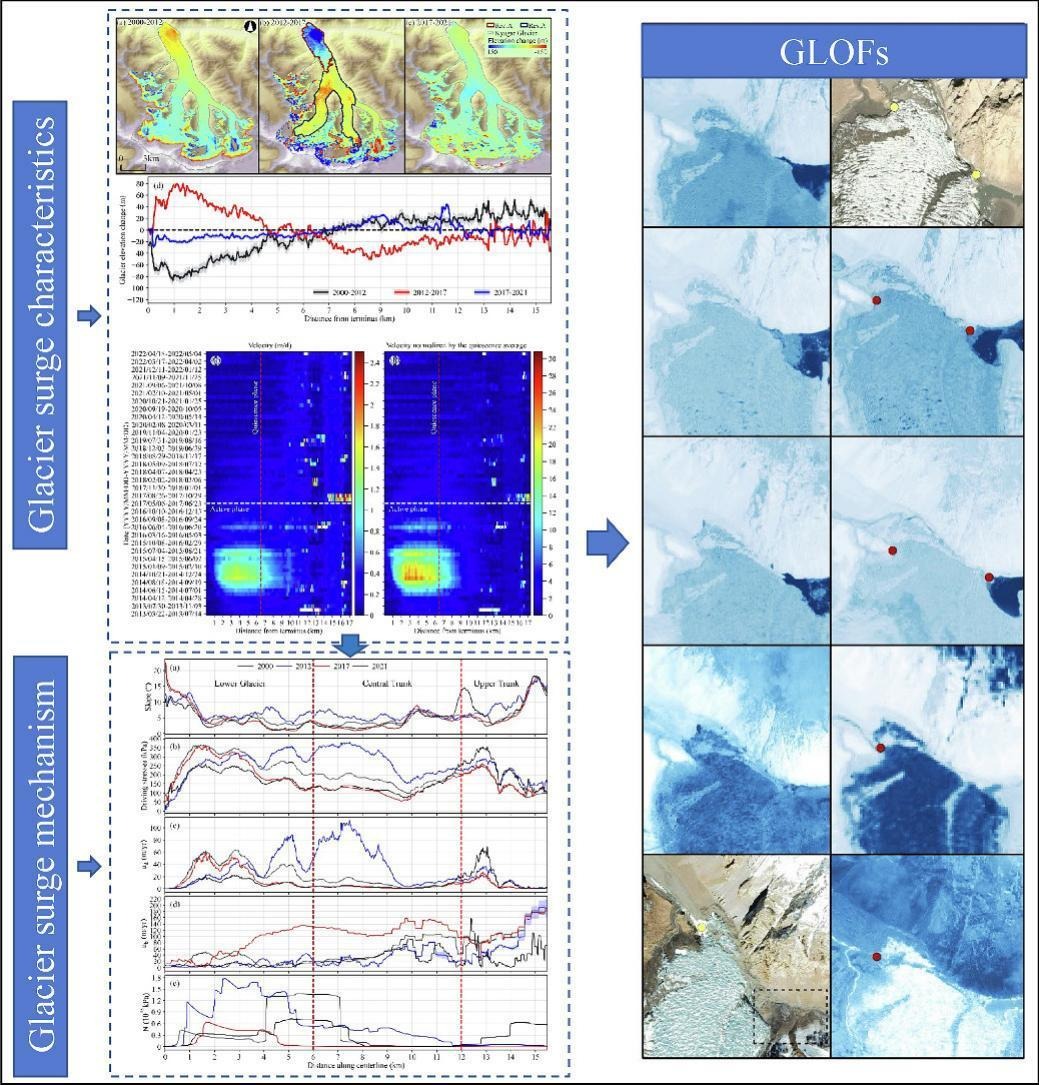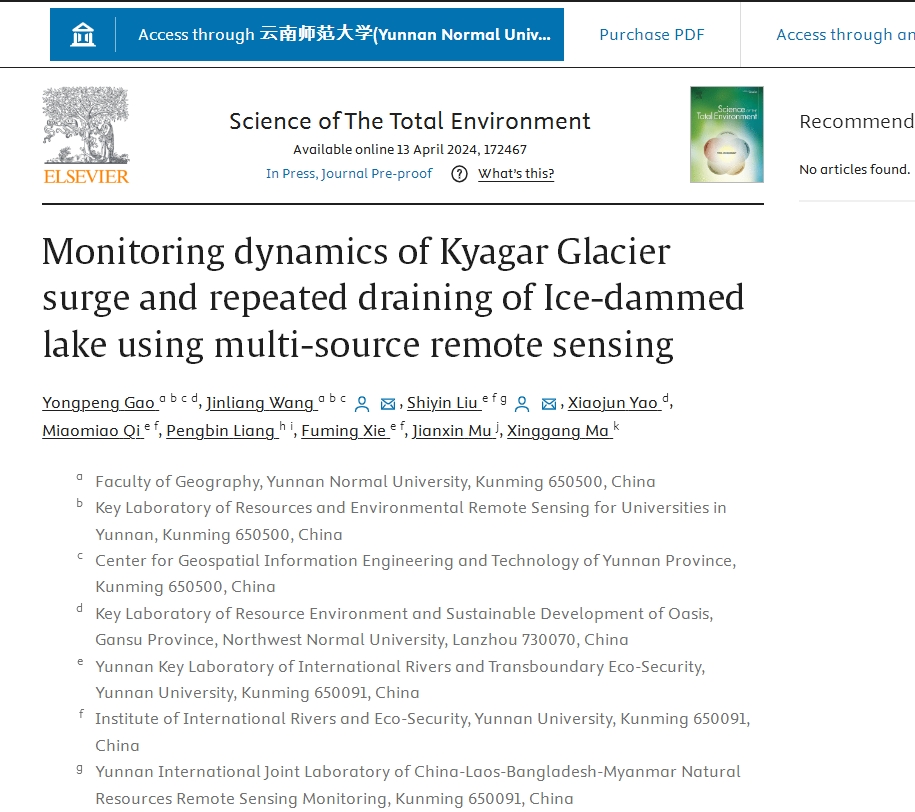博文
云师大地理学部王金亮教授团队在top期刊《Science of The Total Environment》发表研究成果
||
2024年4月13日,Elsevier 旗下top期刊《Science of The Total Environment》在线发表了云南师范大学地理学部王金亮教授团队与云南大学国际河流与生态安全研究院刘时银教授等团队合作的最新研究成果《Monitoring dynamics of Kyagar Glacier surge and repeated draining of Ice-dammed lake using multi-source remote sensing》。云师大地理学部为第一单位,通讯作者为云南师范大学地理学部王金亮教授团队与云南大学国际河流与生态安全研究院刘时银教授。合作单位有青岛科技大学、中国科学院西北生态环境资源研究院等单位。

Abstract
Glacier surges, a primary factor contributing to various glacial hazards, has long captivated the attention of the global glaciological community. This study delves into the dynamics of Kyagar Glacier surging and the associated drainage features of its Ice-dammed lake, employing high temporal resolution optical imagery. Our findings indicate that the surge on Kyagar Glacier began in late spring and early summer of 2014 and concluded during the summer of 2016. This surge resulted in the transfer of 0.321 ± 0.012 km3 of glacier mass from the reservoir zone to the receiving zone, leading to the formation of an ice-dammed lake at the glacier's terminus. The lake experienced five outbursts between 2015 and 2019, with the largest discharge occurring in 2017. And the maximum water depth during this period was 112 ± 11 m, resulting in a water storage volume of (158.37 ± 28.32) × 106 m3. On the other hand, our analysis of the relationship between glacier surface velocity and albedo, coupled with an examination of subglacial dynamics, revealed that increased precipitation during the active phase of the Kyagar Glacier results in accumulation of mass in the upper glacier. This accumulation induces changes in basal shear stress, triggering the glacier's transition into an unstable state. Consequently, glacier deformation rates escalate, surface crevasses proliferate, potentially providing conduits for surface meltwater to infiltrate the glacier bed. This, in turn, leaded to elevated basal water pressure, initiating glacier sliding. Furthermore, we postulated that the repetitive drainage of Kyagar Ice-dammed lake was primarily influenced by the opening and closing of subglacial drainage pathways and variations in inflow volumes. Future endeavors necessitate rigorous field observations to enhance glacier surge simulations, deepening our comprehension of glacier surge mechanisms and mitigating the impact of associated glacial hazards.

扩展阅读:
https://blog.sciencenet.cn/blog-454141-1429502.html
上一篇:云师大化工学院赵学博士在top期刊《Coordination Chemistry Reviews》发表第二篇综述文章
下一篇:云师大化工学院高层次引进人才叶龙武团队在top期刊《Chinese Chemical Letters》发表最新研究文章